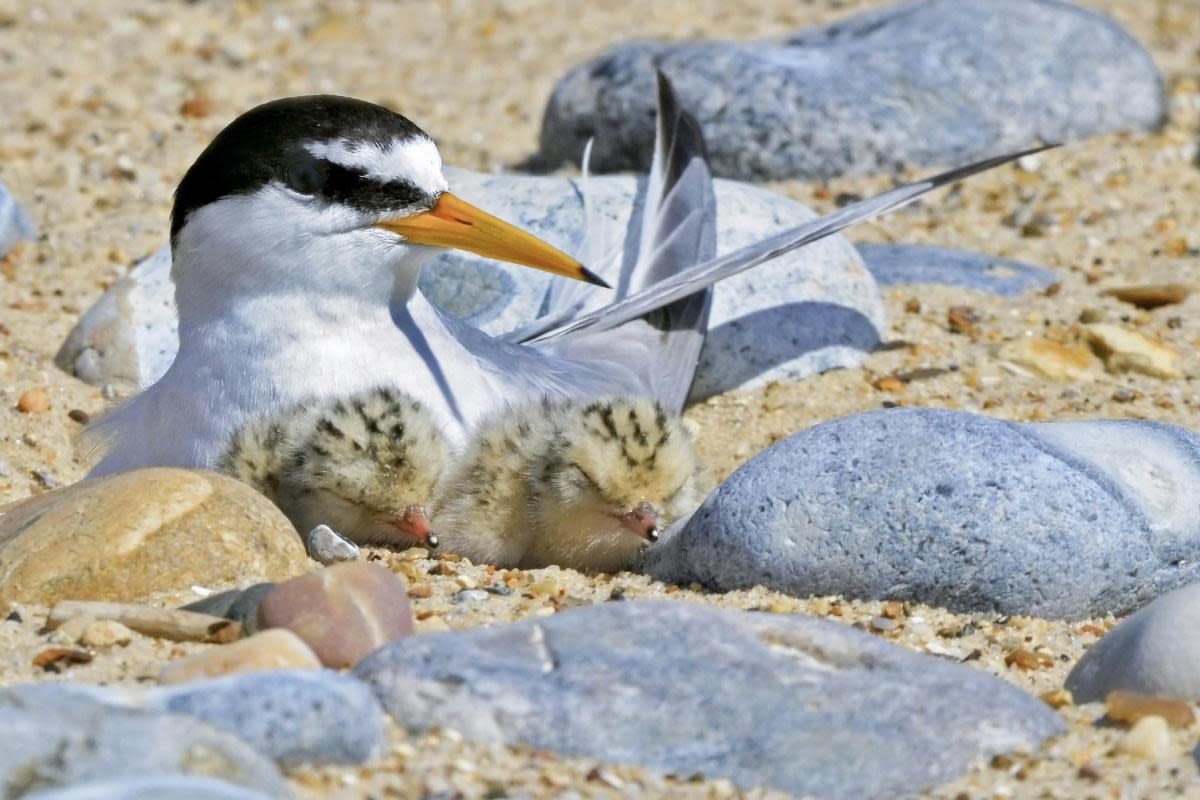Island airport tears up runway to help another flying visitor

Most airports try and keep their runways clear of birds, but one island air terminal is flipping the script to give small fledglings a chance and boost a declining population of rare birds.
Conservationists on Islay have turned a disused runway near the shore into a breeding ground for Little Terns, which migrate to Scotland and its islands to nest on the ground in colonies.
Swapping support for fixed wings for the feathered variety, staff at the airport and a team from the conservation programme Species on the Edge worked to create a safe haven at the airport by transforming the runway into a 'beach' for the birds to nest on.
They have even prepared the ground with plastic ‘decoy Terns’ in the hopes of encouraging the real-life variety to pick the spot to nest and raise chicks.
The hope is that by the end of the breeding season, no stone will be un-Terned and a new population of the diminutive birds will take flight.
Staff prepare the ground for the birds (Image: Species of the Edge)
Niall Colthart, Islay Airport Manager, said “I'm delighted by our collaboration with Species on the Edge and RSPB to create a safe nesting habitat for Little Terns on this beautiful island.
“This initiative not only helps protect a vulnerable species but also underscores our commitment to environmental stewardship.
“By repurposing a disused section of our runway, we're ensuring that these remarkable birds have a secure place to breed and thrive, contributing to the conservation of Islay's natural heritage.”
READ MORE: Researchers believe nest study offers 'lifeline' to under-threat capercaillie
READ MORE: Wild falcons hatched in Glasgow tower fly the nest - video
The latest breeding seabird census shows that Little Tern numbers have fallen by almost a third in the last two decades, with the Argyll and Bute region seeing its population fall by a half.
Creating disturbance-free areas with suitable nesting material is one of the most important actions that can be taken to help protect Little Terns, with colony sites often prone to disturbance by humans, dogs, and flooding.
The seabirds can abandon nests, eggs and chicks if they feel threatened.
A Little Tern in Flight (Image: NQ)
Lucy Atkinson, Species on the Edge Project Officer in Islay, said: “We will be monitoring the area over the breeding season and are excited to see the positive impact for our ground-nesting birds.
The Little Tern is one of 37 rare and vulnerable species being supported through the Species on the Edge programme.
The multi-million pound scheme, funded by The National Lottery Heritage Fund, is active across seven areas in Scotland, working with local groups and communities to secure a future for Scotland’s most at-risk coastal species.
Islay airport (Image: NQ)
Fiona Strachan, Species on the Edge Programme Manager, added: “It’s great to see this collaborative effort to support Little Terns on Islay.
“The terns need our help now more than ever and this is an excellent example of the kind of partnership we are encouraging across our project areas.
“We’re very grateful to all involved and are keeping our fingers crossed for a successful breeding season for the terns.”
Gayle Barclay, Head of Environment and Sustainability with Highlands and Islands Airports, said: "As caretakers of our environment, we at Highlands and Islands Airports Limited are proud to collaborate with Species on the Edge and RSPB in creating a sanctuary for Little Terns at Islay Airport.

 Yahoo News
Yahoo News 
